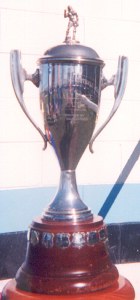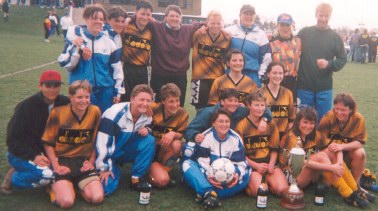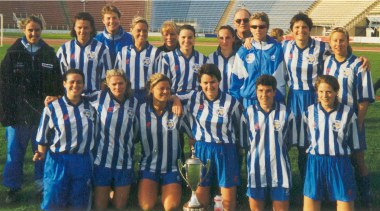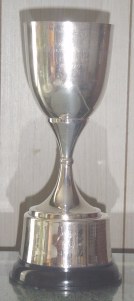The Ultimate New Zealand Soccer Website | home
Roll Of Honour | History | 1976 | 1977 | 1978 | 1979 | 1980 | 1981 | 1982 | 1983 | 1984 | 1985 | 1986 | 1987 | 1988 | 1989 | 1990 | 1991 | 1992 | 1993 | 1994 | 1995 | 1996 | 1997 | 1998 | 1999 | 2000 | 2001
History
In the days before federation-based football in New Zealand, once a year, provinces from far and wide converged on that year's chosen venue for the National Women's Soccer Tournament.
Organised into two divisions of, preferably, six teams, round-robin play began on the Sunday, with each team playing once a day. Semi-finals took place the following Friday, along with promotion-relegation play-offs, while Saturday was reserved for the Grand Final and the third place play-off, which preceded it.
The competition was first held in June, 1976, and attracted five entries - Auckland, Canterbury, Wellington - the three major associations in the country at the time - Oamaru and Southland. Unfortunately, Oamaru was a late withdrawal, meaning host province Canterbury fielded a B side to make up the numbers.
From that time on, the number of entries grew annually, peaking in 1985 when fourteen provinces were represented. A gradual decrease in entries since came about largely due to the economic pressures that competing in National Tournaments placed on the smaller provinces.
With such sizable entry numbers, it was commonplace until 1992 for provinces to play one or two games a day from opening day (usually Sunday) through to the following Wednesday, with Thursday being set aside as a very welcome rest day. Friday and Saturday, as is the case today, were the days set aside for the business end of competition.
Wellington won the first National Tournament, beating Auckland in the final. The two provinces have largely dominated the competition since, although Waikato and Canterbury have also made their mark in recent years.
Because of the strength player-numbers-wise these associations boast, smaller provinces tend not to get too much of a look-in at National Tournaments. Indeed, the last instance of one of the 'big four' failing to make the semi-finals came in 1991, when Nelson put paid to Canterbury's hopes.
As well, the cost of travel to such tournaments, plus issues such as player availability - soccer in New Zealand, regardless of gender, is not a professional sport - means that, in recent years, most smaller provinces have only entered the tournament when it was being held in, or near, their geographical location.
Thus tournaments held in the South Island tend to attract most provinces from that part of the country, but only four North Island provinces, namely Auckland, Waikato, Wellington and Taranaki were consistent visitors. When tournaments take place in the North Island, Canterbury flew the flag for the south, supplemented occasionally by Nelson.
The 1997 National Tournament attracted ten entries overall, including first-time entries from both the New Zealand Universities and the New Zealand Secondary Schools associations. Another new entry, Wairarapa, hosted the 1998 event, while Counties-Manukau was another new province to take part.
Thirteen teams took part in the 1998 event, including, for the first time, New Zealand's national team, who
|
 Wellington - 1994 champions, and initially the most dominant province in New Zealand women's soccer
 The "A Team" - the imperious 1999 squad set standards by which all future representative teams will be judged
  The National Tournament Runners-up Trophy
|
used the tournament as part of their final preparations for the Oceania Women's World Cup qualifying series.
Many of the first-choice Auckland players were part of the SWANZ combination, which was ineligible for the play-off phase, which was again won by Auckland, an indication of the strength and depth of the premier province in New Zealand women's soccer.
A year later, Auckland retained their crown for the third successive season, dominating the tournament with a number of record-shattering performances, most notably in round-robin play against Canterbury B, against whom they amassed an all-time tournament record score - 24-0.
Incredibly, it’s not the national record. That honour belongs to the Waikato women’s team, who eclipsed Northland 26-0 on June 1, 1992, at the four-team Fiji Visitors Bureau Tournament in Auckland.
The “A Team”’s reign as national champions continued unabated in 2000, albeit under the tag of Soccer2, as the advent of federation-based football saw the National Tournament embrace a round-robin format, the provincial names now consigned to the history books.
Unfortunately, not all seven federations were present, Central Soccer, which embraces the area from Taranaki across to Hawke’s Bay and all points in between, opting not to attend the tournament, which was held over the border in Rotorua.
While the advent of Federations has brought about some new names to the footballing dictionary, I have found that the general public simply cannot identify with tags such as Soccer2, their quite logical thinking being that if a team’s from Auckland, then call them Auckland.
So, for the purposes of this website, practicality will prevail over political correctness, hence the recognised provincial names will continue to be used. To those who object to this practice, go set up your own website, or take up politics - PC = BS in my book!!
The 2001 event took place in Auckland, with the hosts’ grip on the trophy brought to an end by Wellington, who were the only team to go through the week unbeaten. The strongest team on paper, Canterbury, came with a wet sail to finish second, ahead of Auckland, these being the strongest teams at the seven-team tournament.
Once again, an absentee was noted, in the form of Otago-Southland, who withdrew late in the piece. North Harbour won the race for fourth place, just ahead of the SWANZ U-18 Development Squad, with Central Soccer’s sixth placing confining the Waikato - Bay of Plenty combination, long a traditional stronghold in the women’s game, to the wooden spoon.
How times have changed in that area of the world, and with such suddenness, too, it must be said. Never out of the top four between 1984 and 1998, the decline in the standard of women’s soccer immediately south of the Bombay Hills, as evidenced by Waikato’s placings in the last three tournaments, is startling, to put it mildly.
|